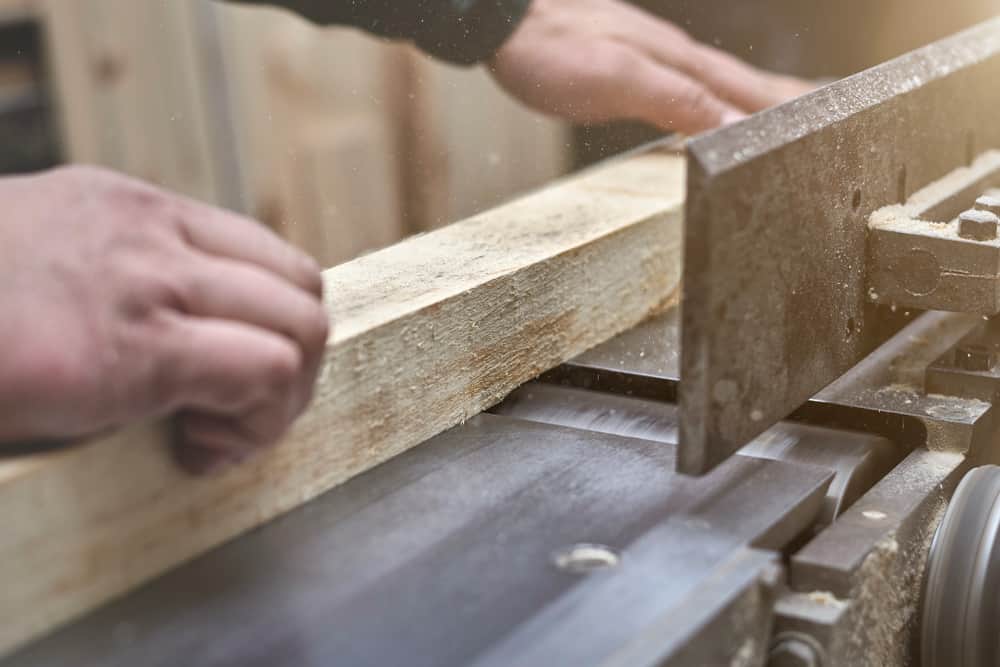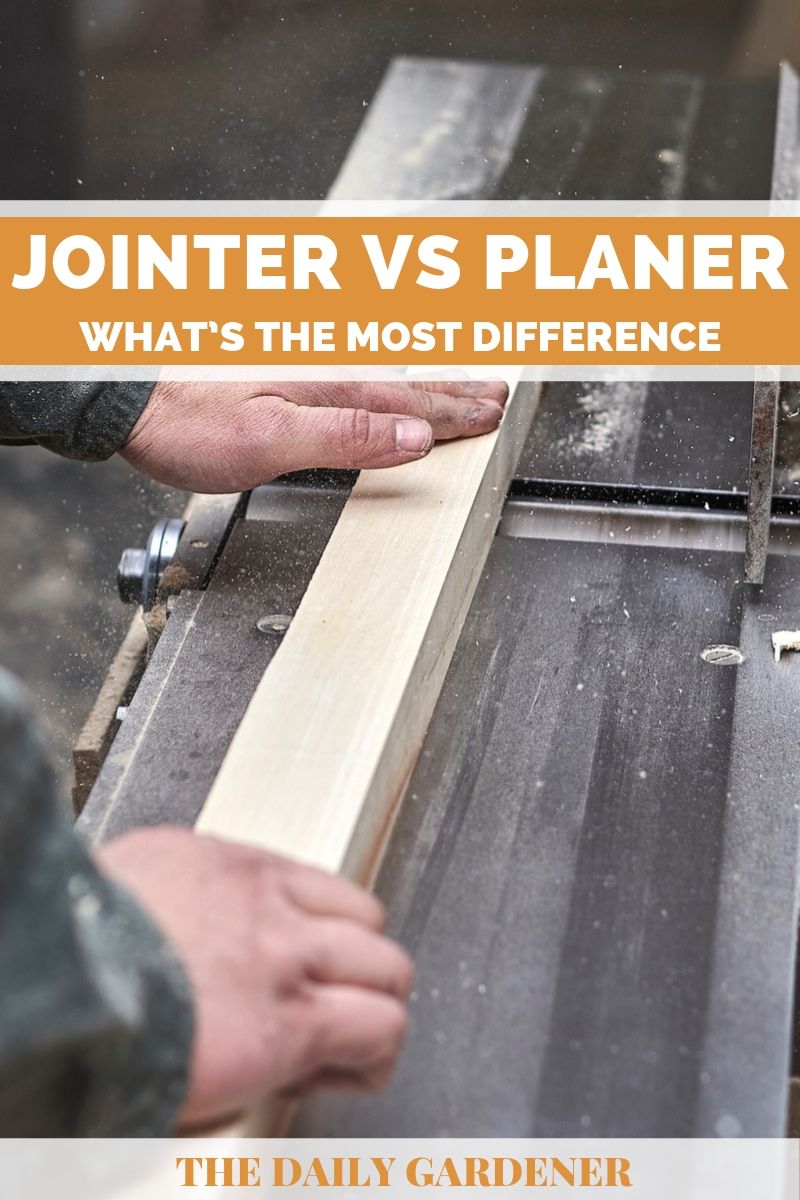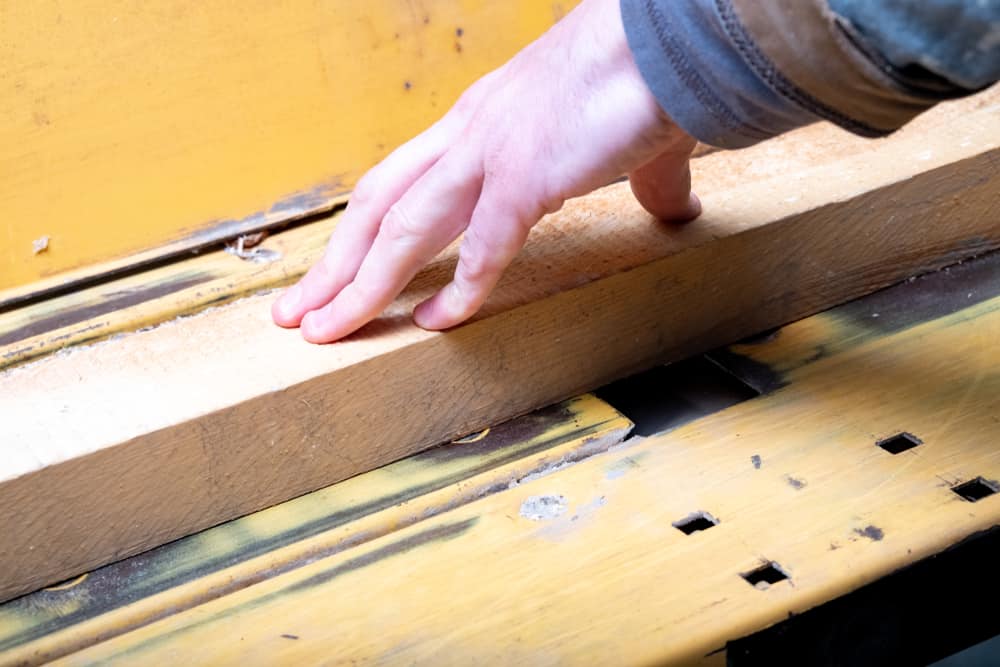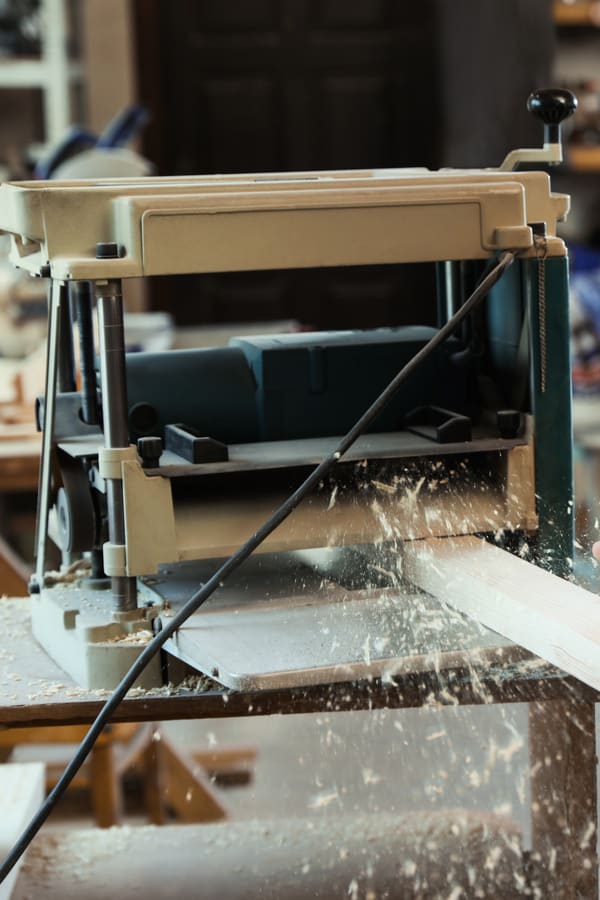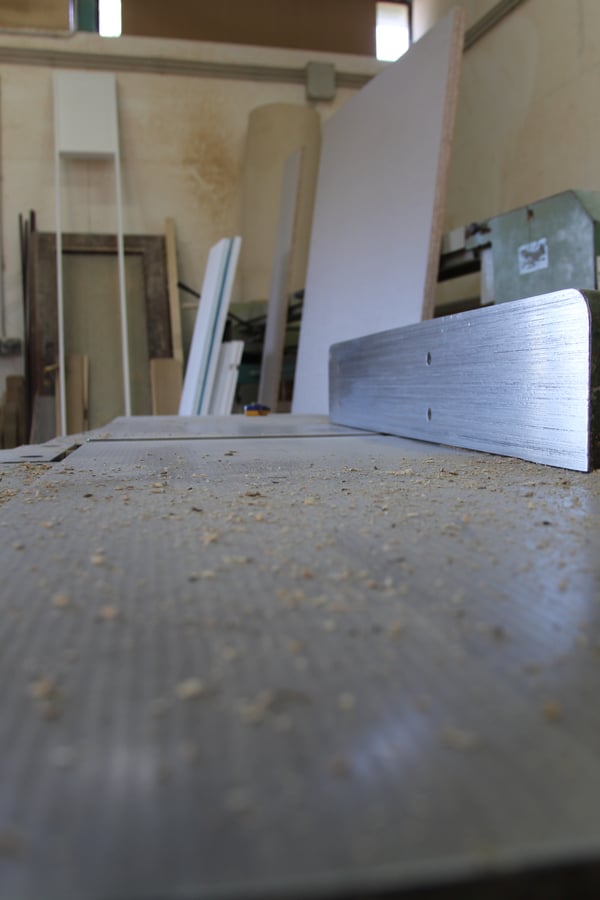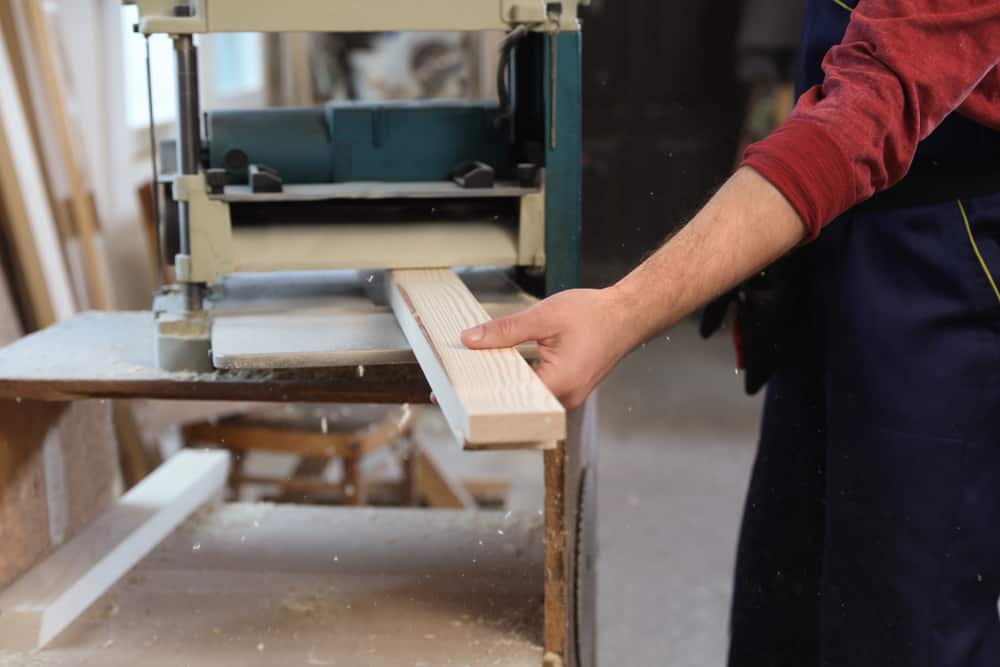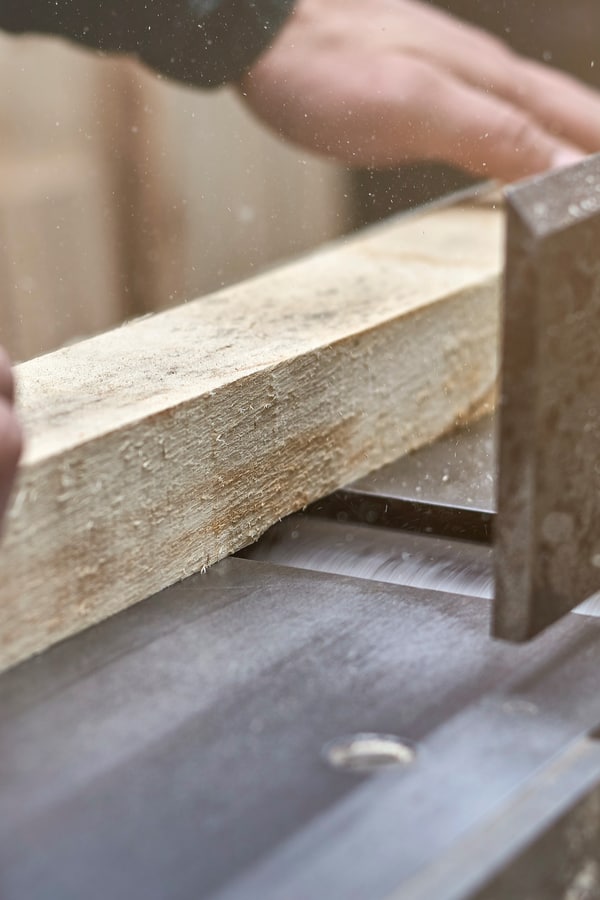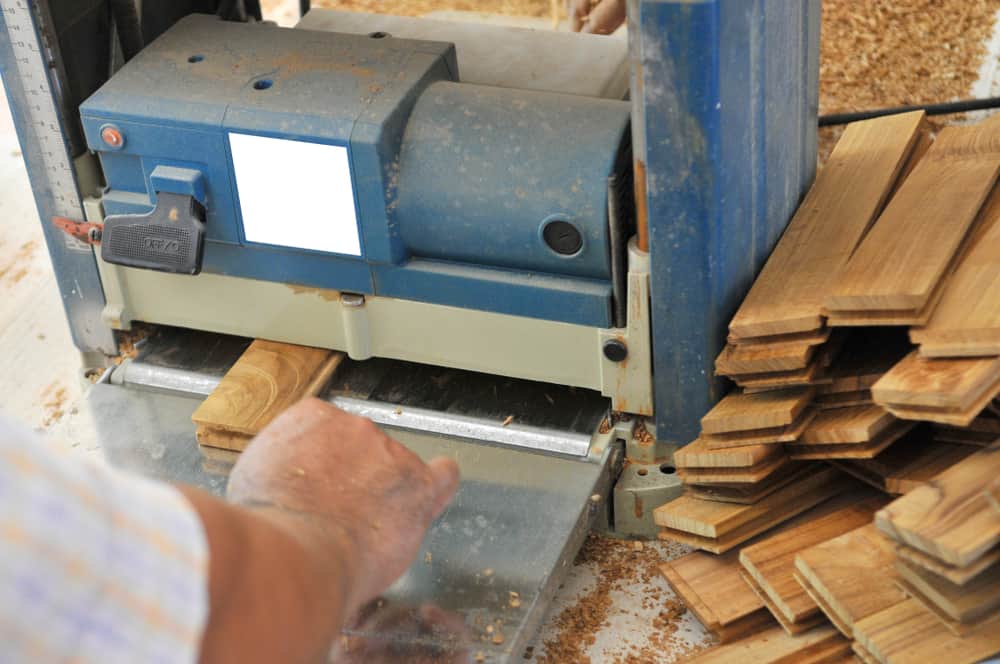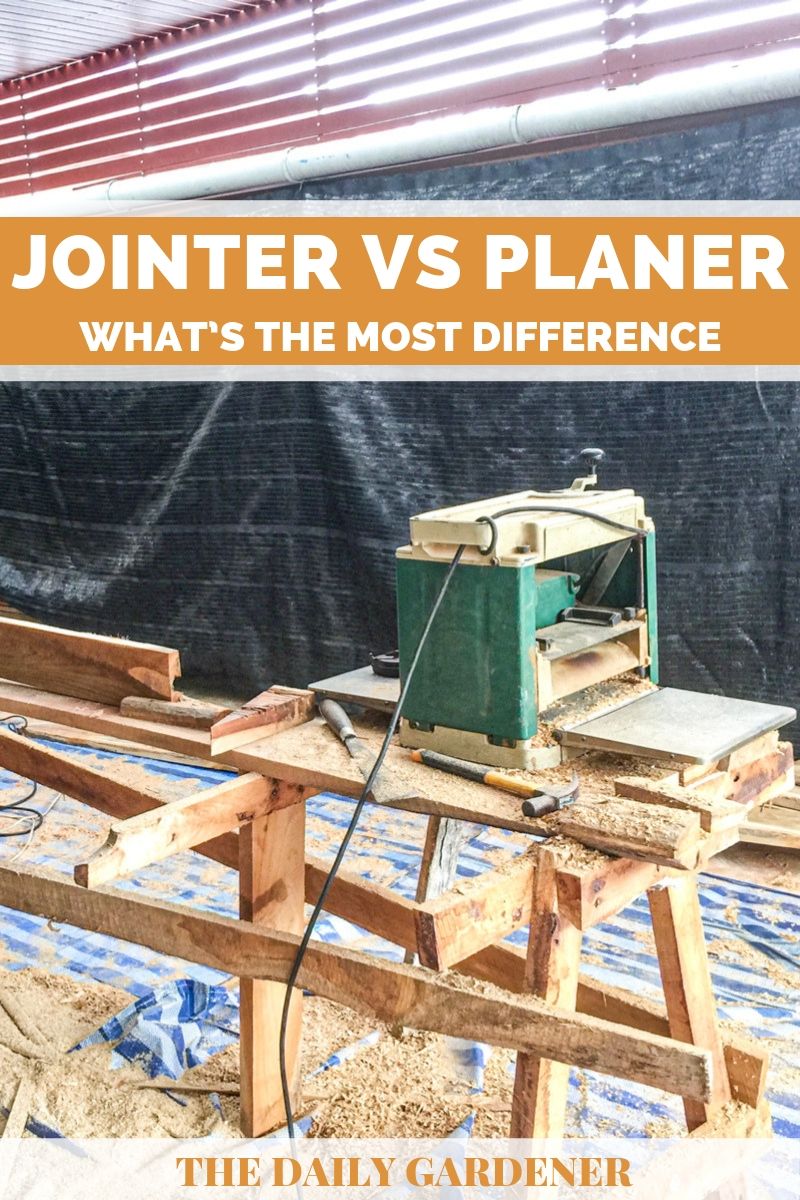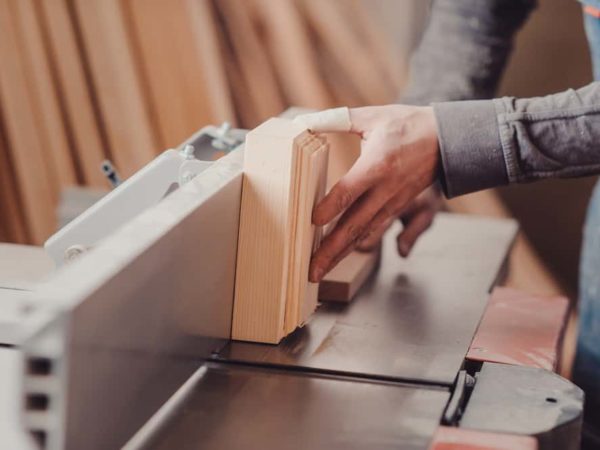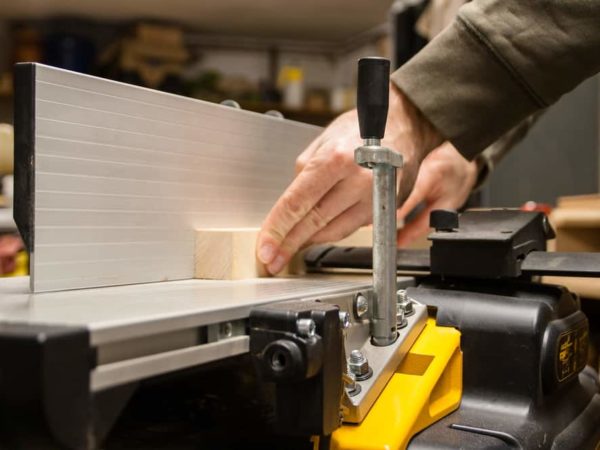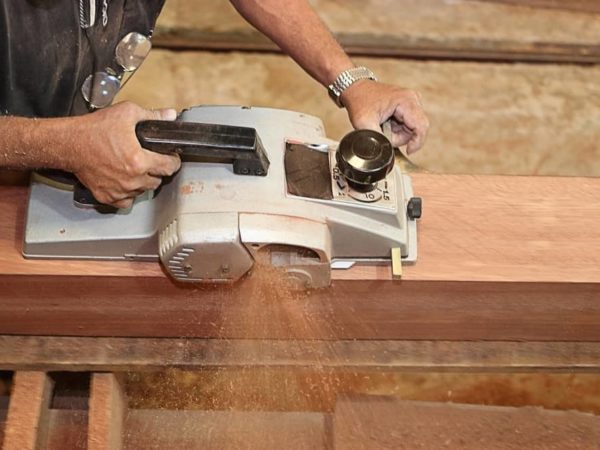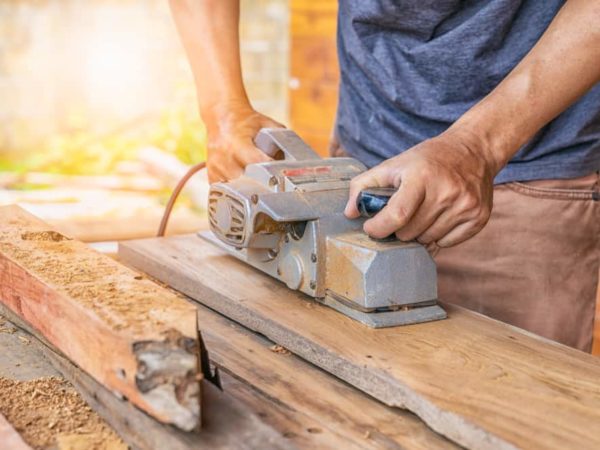There are few woodworking tools that cause as much confusion as a jointer and a planer. What’s the difference between them? Is one better than the other? Do you actually need either of them?
Read on, and we’ll explain everything you need to know in the contest of jointer versus planer!
Table of Contents
What’s the difference between a jointer and a planer?
Let’s start with our definitions. You’re not going to confuse a jointer with a manual hand planer. What we’re talking about here are two power tools.
They’re both big. They’re both expensive. And they’re both used to refine rough wood. So what’s the difference?
Well, a jointer does one job. It creates one flat side and one straight, square edge on your piece of unmilled timber.
The wood planer, on the other hand, has a broader repertoire.
To start with, it will allow you to create clean boards from unmilled lumber. Send it through the planer a few times, and you’ll get a crisp, flat edge.
But the task at which a planer really excels is thicknessing. This clunky term means getting your board to a precise, even thickness of your choice.
You might think a jointer can do this too. After all, if you can get one flat side, why not two?
Well, two reasons. The first is that you can’t set a jointer to give you a specific depth. And the reason for that brings us to the second reason.
You can send your board through the jointer to get one flat side. And you can then turn it over and pass it through again. You’ll end up with two flat sides – but they won’t necessarily be parallel. Instead you could end up with a wedge-shaped piece of wood.
How do jointers and planers work?
It’s perhaps easiest to understand how best to use these two different tools by looking at how they work.
With a jointer, the blades – known as knives – sit on the bottom of the machine. You push the wood over them and it takes off a clean slice. The result is a perfectly straight edge.
With a planer, on the other hand, the knives are positioned at the top, above the material you’re cutting. And you won’t have to push the wood through the machine. The planer will feed it through itself.
The different capabilities of the two tools mean they’re best suited to different applications. The simplest way to think of it is that jointers are best used for edging, and planers for facing.
What can I use a jointer to do?
Jointers work well if you want to deal with warped or bowed wood. With a planer, the wood will be flattened between the rollers and the cutting head as it passes through. The pressure will keep it flat as the machine cuts – but it will return to its original shape when the pressure is removed.
A jointer is also great if you’re joining multiple boards together – perhaps to make a table top. The jointer can be used to remove the crown from the wood. That’s the upward arching curve you see when you look down the narrowest edge. Use a jointer and your boards will fit neatly together.
If you’ve got a jointer with an adjustable fence, you’ll also be able to use it for chamfering. Adjust the fence to 45 degrees, and you’ll get a neat chamfer. Just make sure you’re always working in the direction of the grain to avoid tear-out.
With a little care, you can also use your jointer to create uniform tapers to your timber. That’s great for table or chair legs. And with some free-standing jointers, you’ll also be able to create a rabbet, or rebate cut.
This handy YouTube video from William Walker Company takes you through five different ways to use your jointer.
What about a planer?
If your project needs wood panels of an even thickness, you’ll need a planer. Set the planer to required your thickness, and let the machine do its work.
And although it isn’t the easiest, it is possible to use a planer for edging if you don’t have a jointer. To do that, you’ll need to build a jig to hold the board.
Take a look at this great YouTube video from Make Something to see how it’s done.
How about using them together?
If you’re lucky enough to have both a planer and a jointer, the woodworking world is your oyster.
If you’re using unmilled timber to make floorboards, for example, you’ll probably find the wood isn’t flat. It often bows during the drying process.
Use the jointer first to remove the bow and give you one flat surface. Then put it through the planer to give you two neat, parallel faces. Simple.
Do you really need both?
Both planers and jointers are expensive pieces of equipment. They take a up a lot of room too. So do you really need both?
Well, the truth is, you might not need either! It’s possible to buy your timber pre-surfaced, in neat squared off boards. And you can choose the thickness you want too.
It will be more expensive than rough timber. But you’ll have to buy a lot of wood before it would have been cheaper to get the power tools.
What you won’t get with this approach, though, is the satisfaction that comes with finishing the wood yourself.
And if you have to choose one or the other?
We’d go for the planer. If you’re prepared to put in the work to make a jig, it can be a more versatile tool. But it will never give you the square edge of a jointer.
Summary
That brings us to the end of our jointer versus planer round-up. We hope we’ve demystified these two often confused tools.
So in summary: a jointer cuts below the wood and is used for straight edges and square corners. A planer cuts above the wood and is used to create parallel faces of precise thickness.
Simple, right? Happy woodworking!
Don’t forget to pin it!

